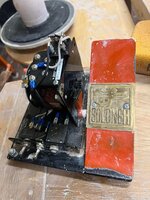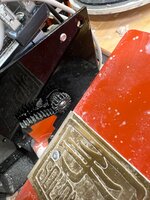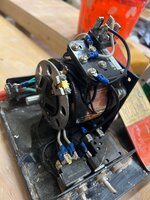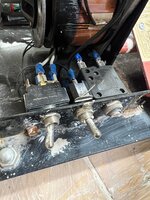Barrywan
Newbie level 6
I may be in the wrong place as any other questions on this are way over my head. But, here goes"
I want to use a 90 volt permanent magnet DC motor and control it with either a pedal or a dial. This is for a potter's wheel. This wheel originally had a big reostat (5A) built into a pedal. I got it with neither the motor of the pedal. The maker of the wheel said that this analog system made more consistent power, easily to adjust speed and made it quieter than an electronic controller. The replacement reostat is now $800,,,so, any thoughts?
Thanks,
Barry
This is wheel in question:
This is a link to a solid state wheel system.
 www.theceramicshop.com
www.theceramicshop.com
I want to use a 90 volt permanent magnet DC motor and control it with either a pedal or a dial. This is for a potter's wheel. This wheel originally had a big reostat (5A) built into a pedal. I got it with neither the motor of the pedal. The maker of the wheel said that this analog system made more consistent power, easily to adjust speed and made it quieter than an electronic controller. The replacement reostat is now $800,,,so, any thoughts?
Thanks,
Barry
This is wheel in question:
This is a link to a solid state wheel system.



